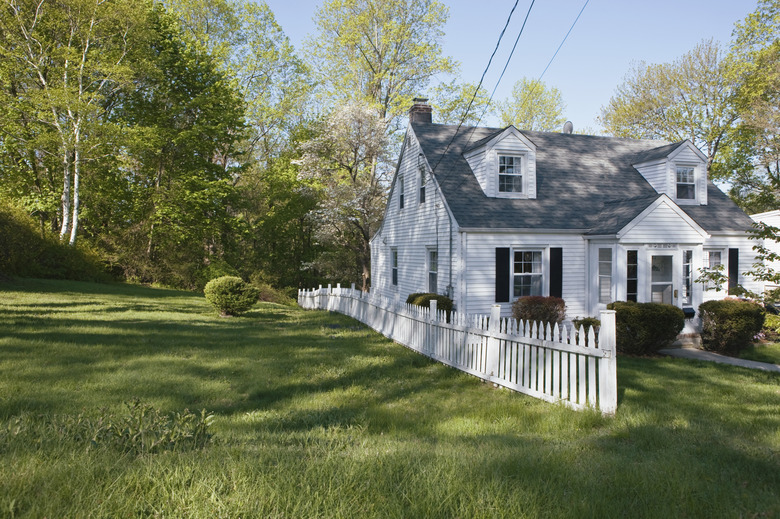How To Flatten An Uneven Backyard
We may receive a commission on purchases made from links.
Established lawns do not always maintain that lush, green look. Bare spots appear and low spots form. If your lawn has numerous low spots or small undulations, there are things you can do to level the land.
What Causes an Uneven Lawn?
What Causes an Uneven Lawn?
Infestations of pests like grubs and voles, problems with drainage and even pipe leaks can cause your yard to become lumpy. Before smoothing out your lawn, it's best to deal with the cause of the peaks and valleys first.
Check your yard for thatch. If decayed grass is clumped under your lawn, your grass may not be getting the air and water it needs to thrive. If you have a 1/2 inch of thatch or more, get a thatch rake and loosen it. Or you can rent a dethatching machine from a rental center that specializes in home improvement equipment.
You can mitigate damage from voles by mowing regularly, clearing thatch from your lawn and keeping woodpiles and compost piles away from the lawn area. Vole damage is usually a short-term problem, so dealing with the causes can prevent it. If your problem is moles, unfortunately, you will have to consider trapping and removing them to solve the problem.
Improve the Soil
Improve the Soil
Mixing compost with topsoil and sand can be used to fill the holes. Try a mix composed of two parts topsoil, two parts sand and one part compost. While sand is often used, sand by itself will dry out your lawn. That will make it harder for your lawn to absorb water. And if your soil is heavy clay, adding too much sand to the clay results in soil that's more like concrete than the loose soil that supports healthy turfgrass.
Dig up the area around the holes, making sure you dig at least 2 to 3 inches deep. Fill the area with the soil mixture and replace the plugs of grass on top of the soil.
Spread a layer of soil mix about 1/4- to 1/2-inch thick around your lawn. Use a rake to spread the soil mixture and make sure you do not cover the grass blades in the process. Instead, watch that you can still see the grass through the soil mixture. This will help you fill in smaller low spots, giving your lawn a smoother look. It will also give your lawn some nutrients.
Leveled Lawn Maintenance
Leveled Lawn Maintenance
Once the low spots have been patched with new soil and plugs of grass replanted on top, you'll need to water regularly. You may want to fertilize lightly to give your lawn a little more nutrition.
Give your lawn about a month before repeating this process. Your lawn may not be as smooth as you want it to be right away but give your grass a month to grow back and spread across the new topsoil. After this time, if you still notice depressions, you may want to repeat the process.
If you think the grass isn't growing back as well as you'd like, this may be the time to add some grass seed. But again, make sure you continue to water the area well. Also, follow the instructions for seeding your lawn and make sure you apply it at the proper time of year.
